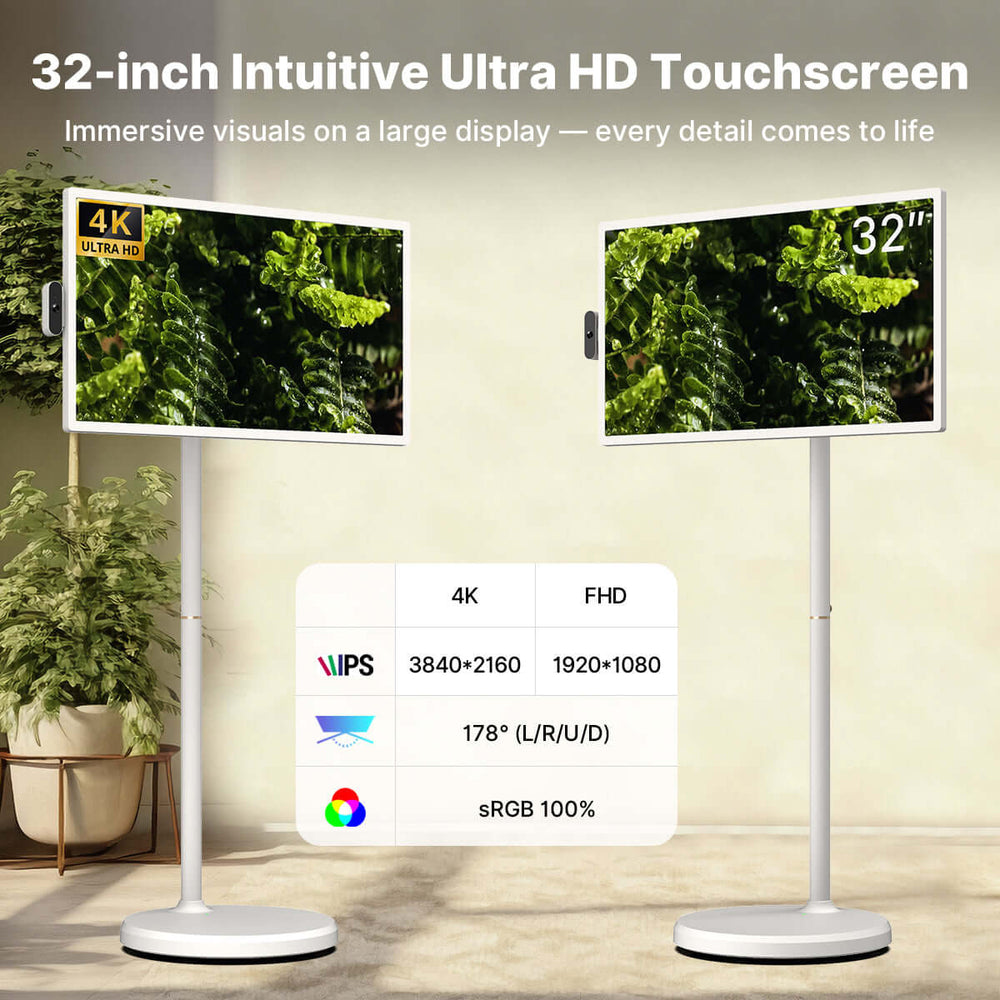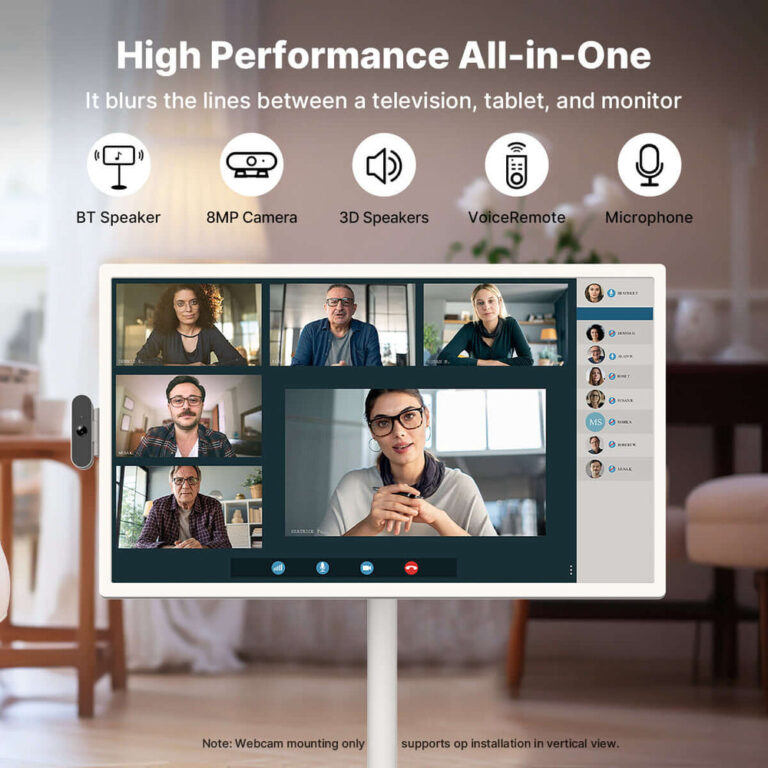
In today’s fast-paced world, entertainment shouldn’t be confined to a single room. Portable TV screens have revolutionized how we consume media, offering the freedom to watch our favorite shows, movies, and sports anywhere in our homes or on the go. Whether you’re cooking in the kitchen, relaxing in the bedroom, working in your home office, or enjoying a backyard barbecue, these versatile devices bring entertainment directly to you.
Unlike traditional fixed televisions that require dedicated spaces and complex installations, portable TV screens combine convenience with functionality, adapting to your lifestyle rather than forcing you to adapt to them. From compact battery-powered displays to wireless streaming monitors, the market offers diverse solutions for every need and budget. This comprehensive guide explores everything you need to know about portable TV screens, helping you discover how these innovative devices can transform your viewing experience and provide ultimate flexibility throughout your living space.
Introduction to Portable TV Screens
Portable TV screens are compact, mobile display devices designed to deliver television content and multimedia entertainment without the constraints of traditional fixed installations. These screens range from small 7-inch handheld units to larger 17-inch models, featuring built-in rechargeable batteries, digital tuners, and multiple connectivity options. Modern portable TVs support various input sources including antenna reception, HDMI connections, USB drives, and wireless streaming capabilities.
They serve diverse purposes beyond simple television viewing, functioning as secondary monitors for laptops, gaming displays, security camera screens, and multimedia players. The technology has evolved significantly from early battery-powered sets, now incorporating high-definition displays, smart features, and extended battery life that can last several hours on a single charge. Whether you need entertainment during camping trips, want flexibility moving between rooms, or require a backup display during power outages, portable TV screens offer practical solutions that traditional televisions cannot match.
Key Features of Portable TV Screens
Modern portable TV screens incorporate several essential features that distinguish them from conventional televisions. Display quality stands at the forefront, with most models offering LED or LCD panels in resolutions ranging from standard definition to full HD 1080p, ensuring crisp visuals even on smaller screens. Battery capacity represents a critical specification, with quality units providing three to five hours of continuous playback, while some premium models extend beyond eight hours for all-day use.
Connectivity options have expanded dramatically, including digital TV tuners for over-the-air broadcasts, HDMI ports for gaming consoles and streaming devices, USB inputs for direct media playback, and SD card slots for additional storage access. Many contemporary models integrate wireless capabilities such as Wi-Fi and Bluetooth, enabling streaming from smartphones and tablets without cables. Audio performance varies considerably, with built-in speakers adequate for personal viewing, though most include headphone jacks for private listening.
Physical design considerations include adjustable stands, carrying handles, and protective cases that enhance portability. Screen sizes typically range from compact 9-inch displays perfect for personal use to larger 15-17 inch options suitable for small group viewing. Additional features may include remote controls, multiple viewing angle adjustments, car adapter compatibility for vehicle use, and rechargeable lithium-ion batteries that can also power the device while plugged in, ensuring uninterrupted entertainment regardless of battery status.
How Portable TV Screens Work
Portable TV screens function through integrated systems that combine display technology, signal reception, and power management into compact, self-contained units. At their core, these devices utilize LCD or LED panels that convert electrical signals into visible images, similar to standard televisions but optimized for lower power consumption and durability during transport. The signal reception process varies depending on the input source: built-in digital TV tuners decode over-the-air broadcasts received through telescopic or external antennas, converting radio frequency signals into audio and video output.
When connected via HDMI or AV inputs, the screen processes digital or analog signals from external devices like streaming sticks, gaming consoles, or DVD players, displaying the content directly without additional conversion. Battery operation relies on rechargeable lithium-ion cells that supply consistent voltage to all components, with intelligent power management systems regulating energy distribution to maximize runtime. The internal circuitry includes processors that handle signal decoding, image scaling to match the native screen resolution, and audio amplification for the built-in speakers.
Control interfaces, whether physical buttons or remote controls, send commands to the main processor to adjust settings like volume, channel selection, and input switching. Wireless-enabled models incorporate Wi-Fi or Bluetooth modules that receive streaming data from smartphones and tablets, decoding these signals for playback. This integration of multiple technologies within a portable form factor allows these screens to operate independently or as versatile display extensions for various media sources.

Benefits of Using Portable TV Screens
Portable TV screens deliver numerous advantages that extend far beyond simple mobility. The primary benefit lies in their exceptional versatility, allowing you to enjoy entertainment in any location without the expense and permanence of installing multiple fixed televisions throughout your home. This flexibility proves invaluable for renters who cannot mount equipment, homeowners who frequently rearrange spaces, or anyone who values adaptable living arrangements.
Space efficiency represents another significant advantage, as these compact devices require minimal room and can be stored away when not in use, unlike bulky traditional televisions that dominate wall space permanently. The independence from fixed power sources through battery operation ensures entertainment continuity during power outages, outdoor activities, or travel situations where electrical outlets may be unavailable or inconvenient.
Cost-effectiveness makes portable screens attractive alternatives to purchasing multiple standard televisions for different rooms, delivering substantial savings while maintaining viewing options throughout your living space. Their multi-functional nature adds further value, serving as computer monitors, gaming displays, presentation screens, or security camera viewers beyond traditional television watching.
The ease of setup eliminates the need for professional installation, mounting hardware, or complex cable management, allowing immediate use straight from the box. For families, portable screens reduce conflicts over television access, enabling different household members to watch preferred content simultaneously in separate locations without investing in expensive multi-room entertainment systems.
Factors to Consider When Choosing a Portable TV Screen
Selecting the right portable TV screen requires careful evaluation of several critical factors that directly impact your viewing satisfaction and practical usability. Screen size should align with your intended use—smaller 7-10 inch displays suit individual viewing and maximum portability, while 13-17 inch models better accommodate small groups and provide more immersive experiences at the cost of reduced mobility.
Battery life demands serious consideration if you plan extended use away from power sources; assess your typical viewing duration and choose models offering at least one to two hours beyond your expected needs to account for battery degradation over time. Resolution quality matters significantly for visual clarity, with 1080p HD displays delivering noticeably sharper images than lower resolutions, particularly important for screens larger than 12 inches.
Evaluate connectivity requirements based on your content sources—ensure the screen includes appropriate inputs like HDMI for streaming devices, USB ports for direct media playback, and compatible TV tuner standards for your region if you plan to watch broadcast television. Audio quality often gets overlooked but dramatically affects enjoyment; test speaker performance when possible or verify headphone jack availability for enhanced sound.
Build quality and durability become crucial for frequent transport, with sturdy construction and protective features preventing damage during moves between locations. Finally, consider total cost beyond the initial purchase, including potential accessory needs like external antennas, carrying cases, or car adapters that enhance functionality but add to your overall investment.
Popular Brands and Models
The portable TV screen market features several reputable manufacturers known for reliability and performance. Tyler stands out as a leading brand, offering models with screen sizes from 9 to 14 inches, incorporating digital tuners and extended battery life suitable for both indoor flexibility and outdoor adventures. Supersonic produces budget-friendly options that balance affordability with essential features, including rechargeable batteries and multiple input connections ideal for casual viewers.
Axess provides mid-range solutions with enhanced audio systems and durable construction designed for frequent transport. ApoloSign has also entered the market with models that emphasize high-resolution displays and versatile connectivity options for users seeking quality performance. For premium performance, brands like Naxa deliver high-resolution displays with advanced connectivity including wireless streaming capabilities and USB recording functions.
When evaluating specific models, consider user reviews highlighting real-world battery performance, signal reception quality, and durability under regular use, as manufacturer specifications sometimes differ from practical experience.
Setting Up Your Portable TV Screen
Setting up a portable TV screen is straightforward and typically requires just a few simple steps to begin enjoying your content. Start by fully charging the device before first use, connecting the provided power adapter to both the screen and a wall outlet for several hours until the battery indicator shows complete charge. Once powered, extend or attach the antenna if you plan to receive over-the-air broadcasts, positioning it vertically and adjusting orientation for optimal signal strength.
Navigate the on-screen menu using the control buttons or remote to perform an initial channel scan, which automatically detects and stores all available broadcast stations in your area. For external device connections, plug HDMI cables, USB drives, or AV inputs into their respective ports, then use the input selection button to switch between sources. Adjust the viewing angle using the built-in stand, ensuring the screen sits at a comfortable height and tilt for your seating position.
Configure basic settings like brightness, contrast, and volume to suit your environment and preferences. If your model includes wireless capabilities, access the settings menu to connect to your home Wi-Fi network, entering your password to enable streaming functions. For vehicle use, connect the car adapter to your cigarette lighter port instead of relying solely on battery power during extended trips. Test all functions before taking the device to remote locations to ensure everything operates correctly.
Tips for Optimizing Your Portable TV Experience
Maximizing your portable TV screen’s performance involves several practical strategies that enhance both picture quality and device longevity. Position the screen away from direct sunlight and bright light sources to reduce glare and improve visibility, adjusting brightness settings lower in dim environments to conserve battery power. Maintain optimal signal reception by experimenting with antenna placement near windows or higher elevations, avoiding metal objects and electronic devices that cause interference.
Preserve battery health by avoiding complete discharge cycles when possible, instead recharging when the indicator reaches 20-30 percent capacity, and unplugging once fully charged to prevent overcharging stress. Clean the screen regularly using microfiber cloths designed for electronics, avoiding harsh chemicals that damage protective coatings. Store the device in moderate temperature environments, as extreme heat or cold degrades battery performance and screen components.
For outdoor use, consider portable power banks compatible with your screen’s voltage requirements to extend viewing time beyond the internal battery’s capacity. Update firmware when manufacturers release improvements that enhance functionality or fix bugs, ensuring your device operates with the latest optimizations available.
Also Read: From IRC to Discord: The Evolution of Online Chat Rooms
Entertainment Freedom at Your Fingertips
Portable TV screens represent a practical solution for modern living, delivering entertainment flexibility that traditional televisions simply cannot match. These versatile devices eliminate the constraints of fixed installations, allowing you to enjoy your favorite content wherever life takes you—from kitchen counters during meal preparation to backyard patios for outdoor gatherings. With advances in battery technology, display quality, and connectivity options, today’s portable screens offer impressive performance in compact, affordable packages.
Whether you’re seeking a secondary display for occasional use, a travel companion for road trips and camping adventures, or a complete alternative to multiple fixed televisions throughout your home, portable TV screens provide adaptable solutions tailored to diverse needs and lifestyles. By carefully considering factors like screen size, battery life, and connectivity requirements, you can select a model that perfectly aligns with your viewing habits and budget. As technology continues evolving, these devices will only become more capable and accessible, further cementing their role as essential entertainment tools for anyone valuing convenience, mobility, and the freedom to watch what they want, when they want, wherever they want.








